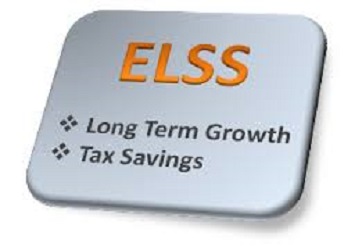Most taxpayers ignore tax-saving mutual fund schemes as they could not see the stock market movements, hence they are happy with risk-free instruments such as 5 year tax-saving fixed deposits and public provident funds offer just 8-9% return. In the mutual fund industry parlance, equity-linked saving schemes, or ELSS are called as ‘Tax Planning Funds’ which offer paramount choice to any taxpayer with dual advantage of earning higher returns along with tax deduction benefit under section 80C up to Rs1 lakh but subject to lock-in-period of three years thanks to provide higher liquidity in compare to other tax saving instruments like NSC, PPF and fixed deposit schemes which come in the lock-in-period to the tune of 5 to 15 years.
Synopsis of ELSS
ELSS (equity-linked saving scheme) is the mirror image of diversified equity funds and invests a majority of its corpus in equity and equity related products. Though, it is suitable for investors having a high risk profile as returns in ELSS fluctuate depending upon the equity market and there are no fixed returns but in the long run say 7-10 years, these are quite safe and may generate 12-15% annualized returns. These schemes are open ended, that is, investors can subscribe to the fund at any day. It’s NAV or the price of the fund is declared on every business day. You can invest it both in lump-sum or monthly SIP and need not commit to yearly payments like annual life insurance premiums.
Why ELSS this year
This year, ELSS funds look more attractive than usual because of buoyant stock prices which have helped the top ones notch up gains of 14 to 16 per cent. But if you are tempted to invest in ELSS funds, it is best to choose carefully at this juncture. No point in investing for tax breaks, only to find your capital eroded by stock market swings three years down the line.
Picking the Best Tax Planning Funds
Generally, amateur investors pick a fund on the basis of its recent performance, without understanding other aspects. There is a lot to a fund, other than returns. It’s very much true that the returns are the first priority that an investor should look, but digging a litter deeper understanding can help you make a better choice. For that, we put the entire lot of best ELSS funds with a higher allocation to large caps as well as those which are inclined towards and mid and small cap stocks. These funds usually see a surge in investments during the latter half of the year.
1. Axis Long Term Equity Fund
This is a young flexi-cap fund with substantial 45 percent of the portfolio in small- and mid cap stocks, moving towards growth stocks to generate extra returns. The fund has been in the top two quartile in the all the three years of its existence and trailing four year return of 14.8 per cent is higher than the benchmark category average of 5.23 percent. It has built an enviable track record and makes it a compelling pick for investor.
2. BNP Paribas Tax Advantage Plan
This is also a flexi-cap fund, with enough mid-and small cap exposure to influence its performance. The fund has been in the top two quartiles for the last three years with annualized return is 9.63 percent, substantially higher than its benchmark category average of 4.45 percent. A flexible investment strategy, sustained superior performance and a fine track record through different phases of the market cycle makes this an attractive option for tax-saving investments.
3. Franklin India Tax shield Fund
This is a large-cap oriented fund with a bottom-up investment strategy and has a long history of providing good-but not brilliant returns while offering relative protection during market turmoil. Tax Shield’s long term returns are attractive, with trailing three-year returns of 11.28 per cent and five year returns of 7.96 per cent, which is higher than the category average. Being a stable and conservative fund, it provides safety with reasonable returns- which is exactly what most investors in tax-saving funds need.
4. HDFC Long-Term Advantage Fund
This fund currently has a distinct large cap bias with around 65 percent allocation to it, which was even higher at some points in the past. HDFC LT advantage fund has stayed true to its strategy and remained focused long-term performance through its 14-year long history. Though, the fund has performed lagging behind its category in only three years through its 14- year history, it reclaims its position in top quartile. It has generated five year annualized return of 23.86 per cent is better than category average return of 20.01 per cent. Its consistent track record and management make it worthwhile choice its category.
5. ICICI Prudential Tax Plan
This is a multi-cap fund with mid and small component staying under 35 percent with the rest being large cap. Its management style is slightly adopted as contrarian and value focused approach which enables it to realize gains from any part of the market. The fund has long-term performance is superior to its peers as its annualized five-year return of 25.48 percent is higher than the category average of 18.49 percent. This is a well-consistent run fund where the fund manager has shown his considerable skill to intact the performance in turmoil market.
Suresh Kumar Narula is founder and Principal Financial Planner at Prudent Financial Planners. He has earned the professional CERITIFIED FINANCIAL PLANNER and got registered with SEBI as Investment Advisor. He writes on personal and financial planning articles and got published in Dainik Bhaskar, Business Bhaskar and The Financial Planner’s Guild, India. He is also a member of Financial Planner’s Guild India ( An association of practicing SEBI registered Investment advisers) to create awareness about Financial Planning in general public, promote professional excellence and ensure high quality practice standards. Suresh received his an M.com from Himachal Pardesh University and an MFC from Punjab University, Chandigarh. He can be reached at info@prudentfp.in

